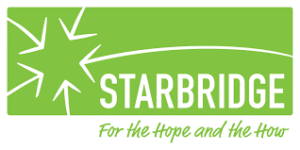Govtech startup Starbridge raised $42 million Series A led by David Sacks’ Craft Ventures with participation from Owl Ventures, Commonweal Ventures, and Autotech Ventures, bringing total raised to $52 million following $10 million seed—a deal size reflecting investor sentiment shift toward public sector sales tools founder Justin Wenig says were dismissed as “too slow, too bureaucratic, too hard to scale” during his prior YC experience in 2019.
Founded in 2024 by Wenig, who sold previous govtech startup Coursedog to JMI Equity for nine figures in 2021, Starbridge aggregates fragmented public sector procurement data from PDFs, agency websites, meeting minutes, and directories into unified platform with AI-powered account scoring indicating which government entities most likely to purchase technology.
The company provides sales intelligence for businesses targeting government contracts by identifying opportunities, tracking leadership changes, monitoring new initiatives, and surfacing actionable insights without requiring vendors to manually research scattered information across disparate sources.
Wenig’s Coursedog exit validates public sector sales expertise. Selling edtech startups serving government and education customers for nine figures despite investor skepticism about govtech demonstrates commercial viability previous investors missed.
The timing matters strategically. Coursedog operated during a period when govtech was considered an unfavorable market. Launching Starbridge in 2024 amid renewed AI-driven govtech interest positions the company to capture investor enthusiasm while leveraging lessons from prior ventures.
Sacks’ Craft Ventures leading the round provides significant validation. Craft’s portfolio emphasizes enterprise SaaS with proven business models. The firm’s govtech investment signals belief that AI tools can overcome traditional public sector sales friction that deterred previous VC interest.
Government procurement data exists publicly but remains practically inaccessible. Freedom of Information Act requests, public records searches, and agency websites contain purchasing history, budget allocations, and vendor relationships—but extracting actionable intelligence requires extensive manual research.
Wenig described the challenge from YC days: “Even finding out basic information, like what a school district purchased in the past year, required a lot of paperwork.” This information asymmetry favors incumbent vendors with established government relationships and dedicated public sector sales teams.
Starbridge attempts solving through data aggregation and AI-powered analysis. The platform scrapes public sources, structures unstructured data (PDFs, meeting transcripts), and applies scoring algorithms identifying accounts exhibiting buying signals.
The value proposition targets businesses lacking dedicated government affairs teams. Small and mid-size technology vendors view government contracts as attractive but resource-intensive. If Starbridge reduces prospecting time from weeks to hours, sales teams can pursue government revenue without hiring specialized government sales personnel.
GovWin (owned by Gartner) and GovSpend provide government contract intelligence through database subscriptions. Both companies operate established businesses serving defense contractors, IT vendors, and professional services firms targeting government customers.
Starbridge differentiates through “AI workflows on top of datasets.” While competitors provide data access, Starbridge emphasizes automation—not just showing opportunities but recommending actions, drafting proposals, and integrating with existing sales tools (CRM, Slack, sequencers).
The integrated experience roadmap described by Wenig—”every competitor goes right to your CRM, every question about an account can be answered right from a slackbot”—suggests workflow automation versus standalone research tool. This positioning mirrors Salesforce’s evolution from CRM database to workflow platform.
However, AI workflow claims require validation. If Starbridge’s AI generates generic proposals or inaccurate recommendations, sales teams revert to manual processes. Government RFP responses require specific compliance language, technical specifications, and pricing structures where errors disqualify vendors. AI must achieve high accuracy to replace human expertise.
US government spending exceeds $6 trillion annually across federal, state, and local levels. Technology spending represents a substantial portion—federal IT budget alone exceeds $100 billion. Adding state/local government technology purchases, education technology, and adjacent sectors creates a multi-hundred-billion addressable market.
However, Starbridge monetizes through subscription fees to vendors, not percentage of government contracts. If the platform charges $5,000-50,000 annually per customer (typical enterprise SaaS pricing), achieving $100 million ARR requires 2,000-20,000 paying customers.
The TAM depends on the number of companies actively pursuing government contracts rather than total government spending. If 50,000 US companies have dedicated government sales efforts, and Starbridge captures 20% at $25,000 average annual contract value, revenue reaches $250 million—justifying Series A valuation.
Revenue model structure remains undisclosed. Potential approaches include: per-seat licensing (sales team members accessing platform), usage-based pricing (opportunities tracked or proposals generated), or tiered subscriptions (feature access levels).
Launching in 2024 and raising Series A months later suggests either: exceptional early traction validating product-market fit, or strong founder pedigree enabling capital raising before demonstrating extensive metrics.
Wenig’s Coursedog exit provides founder credibility supporting early-stage fundraising. Investors betting on repeat entrepreneurs can justify Series A before typical traction milestones if the founder demonstrates domain expertise and execution capability.
The $42 million Series A size indicates aggressive growth plans. Typical uses include: sales team expansion (hiring enterprise sales reps targeting government contractors), product development (building AI workflows and integrations), marketing (establishing brand in govtech category), and operations (customer success supporting implementation).
However, $42 million Series A for 2024-founded company also creates pressure to demonstrate rapid growth justifying valuation. The round likely occurred at a $150-300 million post-money valuation based on typical Series A dilution. Achieving returns requires reaching $300-600 million valuation at exit through IPO or acquisition.
Wenig’s observation that “in the AI era, the tides are shifting” reflects broader investor sentiment. Previous govtech skepticism centered on sales cycle length, procurement complexity, and limited scalability. AI potentially addresses these concerns through automation reducing manual effort.
The thesis assumes AI can: parse complex government documents extracting relevant information, identify buying signals from unstructured data (meeting minutes, budget documents), generate compliant proposal language meeting government requirements, and automate relationship management at scale.
If validated, AI-enabled govtech tools reduce barriers that made sector unattractive during Coursedog fundraising in 2019. Sales cycles accelerate through better targeting. Proposal development costs decrease through automation. Market coverage improves through data-driven prioritization.
However, government procurement inherently involves human relationships, political considerations, and compliance requirements resisting pure automation. Incumbent vendors maintain advantages through established relationships with procurement officers, past performance records, and regulatory expertise. Technology tools assist but don’t eliminate relationship-driven sales dynamics.
Strategic Investor Composition
Craft Ventures (lead), Owl Ventures (edtech focus), Commonweal Ventures (impact investing), and Autotech Ventures (transportation/mobility) represent diverse investor theses converging on Starbridge.
Craft’s enterprise SaaS expertise suggests conviction in workflow automation value proposition. Owl’s edtech background aligns with Wenig’s Coursedog experience targeting education customers. Commonweal’s impact focus indicates belief in improving government efficiency as social good. Autotech’s presence suggests transportation/infrastructure as target verticals for government sales.
The investor diversity could provide strategic advantages—multiple go-to-market perspectives and customer introduction channels—or create conflicting priorities if investors emphasize different growth strategies.
Risk Factors and Execution Challenges
Several factors could prevent Starbridge achieving venture returns:
Data access restrictions: Government entities could restrict public data scraping or require licensing agreements increasing costs.
AI accuracy requirements: Government proposal errors disqualify vendors, requiring higher AI reliability than commercial applications tolerate.
Incumbent competition: GovWin/GovSpend could add AI features neutralizing Starbridge’s differentiation.
Sales cycle realities: Even with better data, government procurement involves lengthy processes limiting velocity improvements.
Regulatory changes: Procurement reform or transparency requirements could alter information availability.
For late-stage investors at Series A valuations, exit requires demonstrating that Starbridge captures significant market share among government contractors, achieves strong unit economics despite enterprise sales costs, and establishes defensible position against established competitors and potential new entrants from large enterprise software vendors








